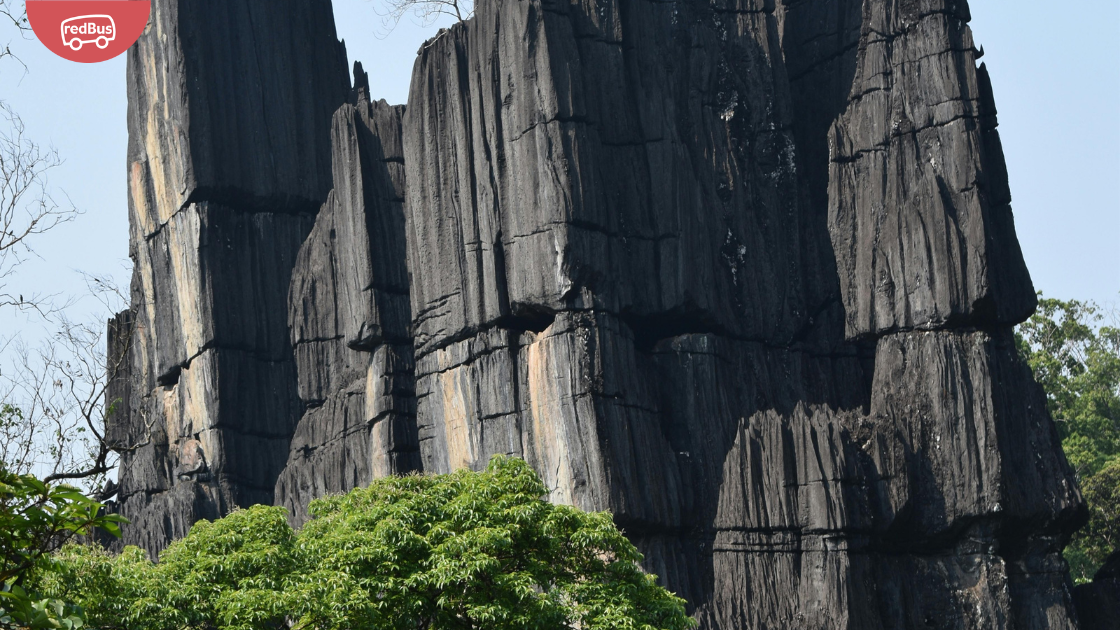The incredible heart of India lies in Madhya Pradesh. Most tourist attractions are found in India, including its extensive network of prehistoric caverns.
Caves in Madhya Pradesh are considered thousands of years old and continue to showcase India’s historic civilisation. Their walls are carved with lovely creative pieces. In addition to numerous man-made caves, such as Chaitanya and Vihara, used by monks for relaxation and prayer, Madhya Pradesh is home to many natural caves where people have lived.
Pandav Caves, Pachmarhi
The Pandav Caves Pachmarhi in India comprises five ancient caves carved from a small hillside. During the exile of the Pandavas, they are believed to have found refuge in these caverns. As a result of its protection as a monument, many Indian visitors visit this site frequently. In the first century AD, a few Buddhist monks also used these five caves for shelter. As a result, Buddhists now regard them as sacred places. Named after the toughest of the five siblings, Bhima, the “Bhim Kothari” is the darkest of all the caves and “Draupadi Kuti” is the one with the most space and is best aired.
Bagh Caves, Dhar
The Bagh Caves are situated in Madhya Pradesh’s Dhar district along the banks of the Baghani River. The most incredible murals created by early humans can be found in the rock-cut caverns of this picturesque location. A thick mud plaster in brownish orange was applied to the walls and ceilings before painting, inspired by the tempera technique. Paintings were then applied over this plaster after it had been lime-primed. The period between October and March is ideal for travel since the weather is good, the scenery is beautiful, and the atmosphere is revitalising.
Adamgarh Caves, Hoshangabad
Adamgarh, one of Madhya Pradesh’s most fascinating caverns, is the ideal location for anyone interested in adventure and history. The Adamgarh Hills are well-known because of the ancient rock shelters and carvings that can be discovered there. The Adamgarh Caves are home to several red and white rock paintings that disclose a lot about prehistoric times. It is believed that the items found here are Stone Age artefacts. It is the perfect location for history buffs to discover much about India’s ancient past. The Adamgarh Hills, where the rock shelters are located, have dense woods.
Bhartrihari Caves, Ujjain
One of the most well-known tourist destinations in Ujjain is the mediaeval Bhartrihari Caves, which are close to the Gadkalika Temple situated on the banks of the River Shipra, which date to the 11th century AD. The stepbrother of King Vikramaditya, Bhartrihari, meditated here for nearly 12 years and is said to be the inspiration for the cave’s name. The openings to the caves are incredibly small, making them challenging to enter. The cave, supported by stone pillars, includes numerous rooms where Hindu deity idols or images are kept.
Bandhavgarh Ancient Caves, Bandhavgarh
On sandstone hillocks of the Bandhavgarh Hills, the Bandhavgarh Ancient Caves are situated. A total of 39 caves, spanning around 5 kilometres, are located in the area. Inscriptions in Brahmi writing can be found in many of these caves, and some of them also feature depictions of animals and other primitive life symbols. Badi Gufa, the largest cave in this area, dates to sometime in the 10th century A.D. Given that it can be seen from the fort, the cave is roomy and well-placed.
Lohani Caves & Temple, Mandu
The oldest monolithic shrines in the Mandav city are the rock-cut Lohani Caves, reportedly discovered around the 11th to 12th century. There are four or five caves that resemble shell-shaped rooms. The Shiva Yogis, specifically, are thought to have lived in these caverns from the pre-Muslim times, even though they are devoid of any writing or carvings. The waterfall near the caves makes the location even more mesmerising.
Udayagiri Caves, Vidisha
The Udayagiri Caves are 20 rock-cut caverns from the early fifth century CE located close to Vidisha, Madhya Pradesh, comprising Hindu and Jain pantheons. Some of the earliest still-standing Hindu temples and iconography in India can be found there. This cave is a sizable open cutting that is 6.5 metres long by roughly 4 metres high, and it is about one metre deep.
Bhimbetka Caves, Raisen
In the Indian state of Madhya Pradesh’s Raisen District is the archaeological site known as Bhimbetka Caves. Rock shelters and cave paintings created by early humans are prominent features of these caverns and rocks. We learn about India’s cultural heritage from the magnificent carvings and paintings inside these caves. There are over 700 rock shelters at this archaeological site, and 400 have drawings depicting community life from the Mesolithic to the Middle Ages.
Saru Maru Caves, Sehore
Buddhist caves and an ancient monastery complex can be found at Saru Maru. These caves have many stupas and are located not far from Sanchi. Here, you can also discover some Ashoka inscriptions. While Ashoka was a prince, it’s thought that he and his family went to these caves. Researchers and visitors from throughout the world frequently visit these caverns.
Kajal Rani Cave, Omkareshwar
One of Omkareshwar’s top tourist destinations is Kajal Rani Cave. The cave is a stunning cave with a lot of beautiful scenery that dazzles the visitor with the grandeur and elegance of the location. The location is also a picnic area to spend such opulent time with family and friends. To see only spectacular splendour in Madhya Pradesh, one needs to go to the location.
Exploring the caves in Madhya Pradesh is an amazing experience that will further pique your interest in the past. The carvings, cave paintings, antiques, relics, and sculptures reveal much about earlier times.
A magnificent collection of cave paintings and carvings, as well as numerous artefacts, relics, and sculptures can all be found inside the cavern walls. These artefacts also provide a fascinating insight into the times they represent. They vividly bring eras as old as the Stone Age to life and stunningly capture their spirit.







